Take Action
Educate. Organize. Protect.
It will take everyone, working together, to protect our food, water and climate. You can be a part of this movement by getting involved with Food & Water Watch, because the most powerful thing standing in the way of the destruction of our resources is YOU.
3 Ways You Can Take Action NOW

Lend A Hand
We need volunteers like you to rally support for important campaigns nationwide to save our food, water, and climate.

Protect Our Water
Shutting off water can be a matter of life and death. Support the Water Act to keep millions connected to affordable, safe water service.

Ban Factory Farms
Factory farms hurt small farmers, animals, and the environment, and endanger consumers. There’s a better way.

Let’s Connect
Your involvement is crucial. Sign up with Food & Water Watch today to find out about breaking news, including how you can fight back against environmental attacks.
Your Help Can Change the World
Food & Water Watch volunteers change the world, one location at a time, by helping win fights to protect our food, water and climate. Find out what our volunteers are up to, communities they have helped, and fights they are taking on.
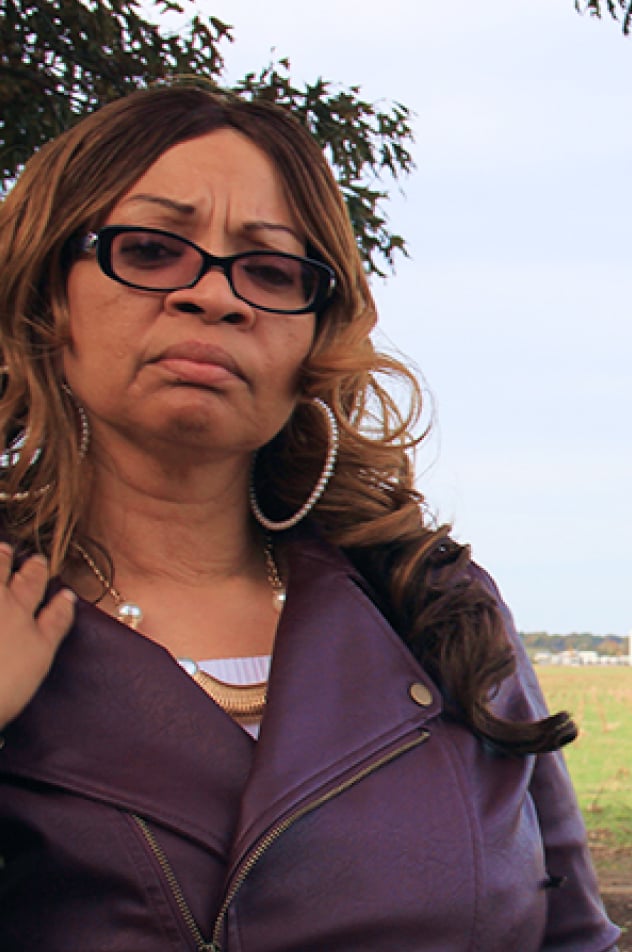
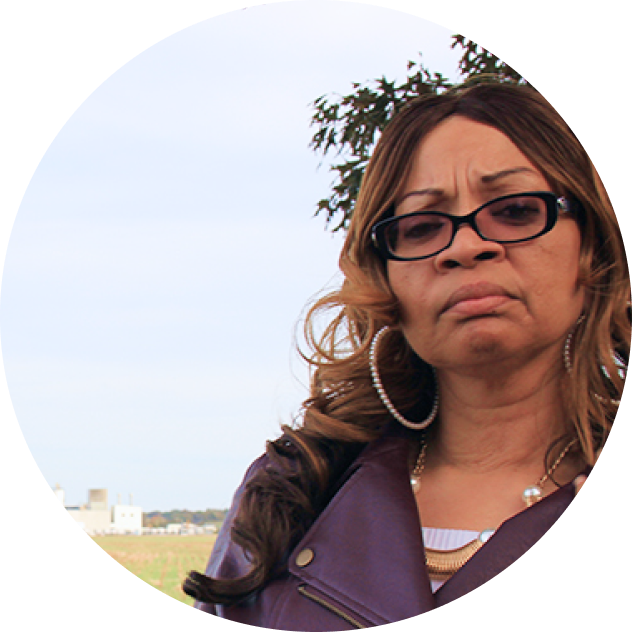
Gina B. tackled Mountaire
“It’s about people doing people wrong. If you know you’re harming somebody and you know it’s not right, then I mean that’s a cause or reason to fight.”
Gina Burton’s grandfather, Herbert, worked tirelessly as a sharecropper in southern Delaware. Through the years, he built his savings and purchased a large tract of land. The plan was to sell some of it for a profit, but keep enough to leave his children and grandchildren parcels that they could live on, prosper from, and enjoy together as family. At first, the plan worked just as he imagined. He sold a portion of his land along the Indian River to Townsend, Inc., a smaller poultry plant. Then he divided up the rest of the land and passed it down through his family members. He passed away with the sense of accomplishment of having done something worthwhile to protect his family’s future. The lane separating Burton’s family properties from Mountaire’s fields is in fact named after Gina’s grandfather — ”Herbert Lane.”
What Herbert didn’t know was that Townsend, Inc. would sell the land to Mountaire, which in 2000 moved in across the lane from where his grandchildren and great grandchildren live, and expanded the operations to volumes that were unsafe for the surrounding families. He didn’t know that what would follow was toxic spraying in the air surrounding their houses, and that high-volume chicken waste would leach into their groundwater, or that many in his family would fall ill, and in the case of his great-grandson (Gina’s son) die from asthma complications. Gina’s grandfather toiled for years, and Mountaire’s carelessness has threatened to turn his legacy into a curse. But Gina won’t let the story end there, and with Food & Water Watch’s help, she plans to force the company to do right by their community.
Gina is a fighter. She works for the Delaware Department of Corrections. When asked why she spends her free time working to expose Mountaire’s bad practices and the damage it’s caused her family, there are many answers. Her son’s tragic death in 2014 from an acute asthma attack is obviously her number one reason. Her family’s many health tragedies, like her Aunt Martha’s loss of her legs, her mother’s colitis, and her sister’s many tumors and strange black spots all over her back are another. Gina herself also suffers from gastrointestinal issues. Other area families wonder whether their strange health issues and the deaths of their family pets could be because of Mountaire’s contamination of their air and water.
Beyond the immediate effects her family has suffered, Gina also has a deep sense of duty to hold the company accountable for doing wrong to so many, and she speaks with passion about why:
“It’s about people doing people wrong. If you know you’re harming somebody and you know it’s not right, then I mean that’s a cause or reason to fight.”
Mountaire, a poultry processing facility in Millsboro, Delaware, produces 2.4 million gallons of chicken waste each day. The waste – comprised of manure, feathers, carcasses, organs, blood, dirt and massive amounts of wastewater – is stored in lagoons and sprayed onto nearby disposal fields that are right across the lane from where Gina Burton’s mother, sisters, nieces, nephews, Aunt Martha, and other family all live on the land that her grandfather provided for them. Gina recounts a recent story about someone being curious about what was being sprayed over those fields:
“One day we came home from church on a Sunday and somebody had taken the end off the sprayer and it was straight green solids coming out — turds coming out… It was within feet of my mother’s front yard.”
The groundwater aquifer below the plant is the sole source of drinking water for the surrounding community — and tests have shown contamination since at least the year 2000. Interestingly, Mountaire Farms was the fifth-largest contributor to Donald Trump’s 2016 presidential campaign — arguably an investment in the government’s continued inaction in addressing the undeniable contamination coming from the company.
In the face of that kind of financial and political power, Gina says that Food & Water Watch has been instrumental in helping her fight back and defend her grandfather’s legacy. An outcome is pending on a motion they’ve filed against the corporation, and Gina credits the boost in her fight to teaming up with the Food & Water Justice legal team:
“Food & Water Watch are more experienced… They had the resources, they knew the legal aspects of it. They had contacts. I went to school for criminal justice but I did it on a law enforcement aspect, not an environmental aspect. You need to connect with people who are more experienced.”
Mountaire has been able to dominate the media coverage through strategic advertising and donations to community causes, something that Gina says would be difficult to combat if she were fighting them without the help of Food & Water Watch.
Whether it’s community meetings, press conferences, educational outreach, or exploring legal options, Gina works night and day to try to make her grandfather’s legacy right again. She knows how hard he worked to achieve the American dream, and she works just as hard to defend it. Mountaire is clearly in the wrong, but Gina is an extraordinary hero for fighting for her community and a champion to inspire us all to fight even harder, too.
What Mountaire is doing in Delaware isn’t isolated. Slaughterhouses, which are only one link in the polluting industrial meat production chain, are ruining family lands all over America, and poisoning people who have a basic human right to clean air and water in their homes.
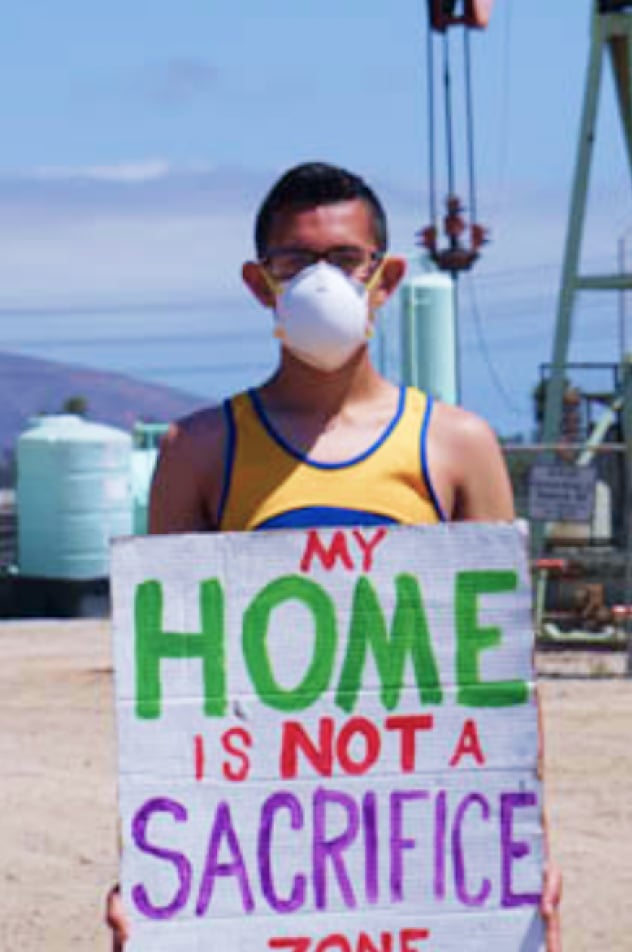
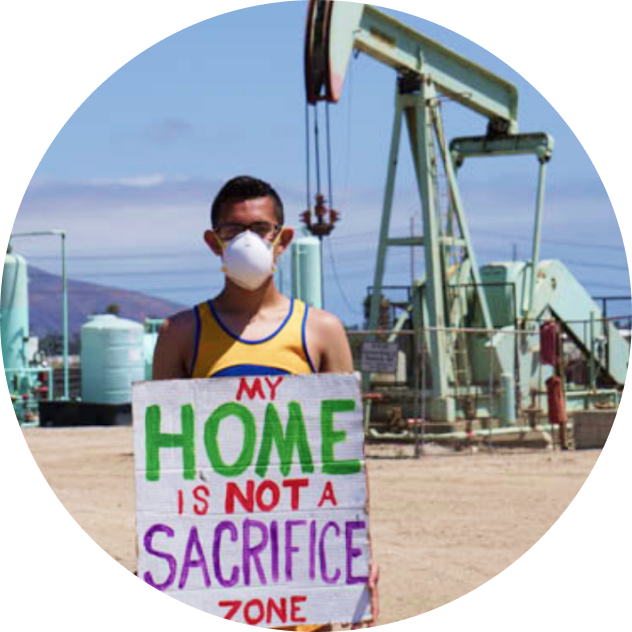
Jesse V. fights for Ventura County
“Food & Water Watch showed me that you can defeat these industries with people power.“
Jesse took us on a tour of the community he grew up in, next to strawberry fields. What he thought was an idyllic situation — running through the fruit fields each day to train for his obsession with track — turned out to be a health hazard he never foresaw.
Those strawberry fields were being sprayed daily with pesticides, and Jesse was breathing them in deeply on those runs. Over time, he developed asthma and that made it harder to keep up with his passion for track.
Less than a mile away, another major health and environmental hazard chips away at the quality of life in his hometown of Oxnard, California. The fracking rigs and “oil donkeys” extracting oil are a prevalent sight, and studies show they have myriad impacts on public health. Jesse decided not to quietly let this happen to the town he loves.
He reached out to Food & Water Watch and with the help of our Senior Central Coast Organizer, Tómas Rebecchi, got to work on a variety of campaigns in the area.
He’s been heartened by some of the things they’ve achieved together, like a recent win stipulating buffer zones for fracking sites. Jesse says, “I’m determined more than ever to take on those industries that polluted my water, my air, and my land.”
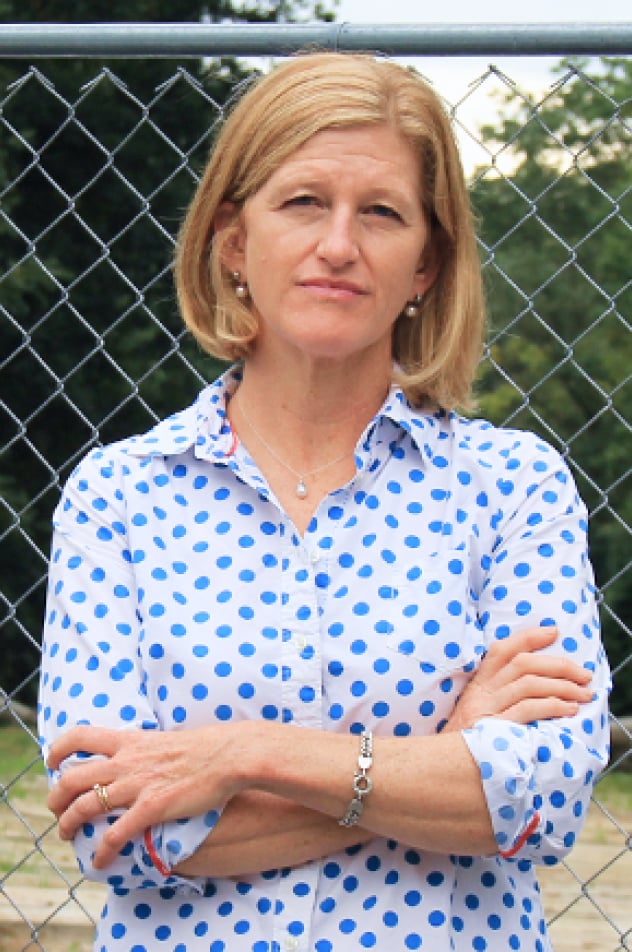
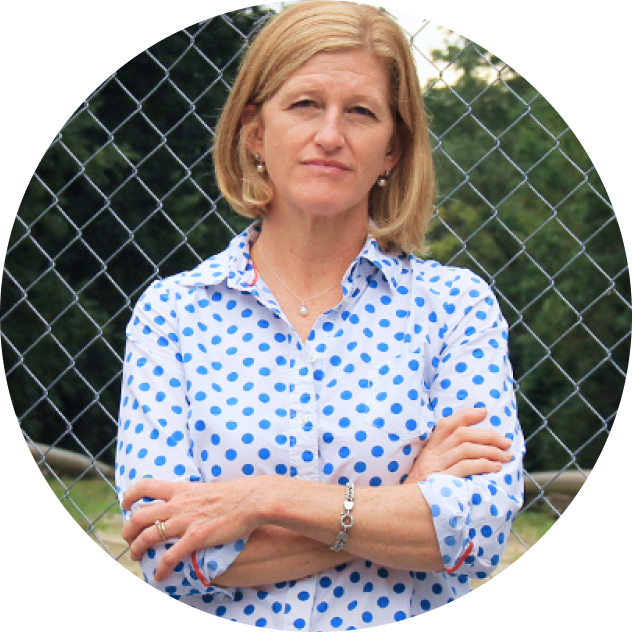
Ginny K. takes on Sunoco & Energy Transfer
“As a result of what Food & Water Watch helped them do the community was wildly successful…”
When Ginny Marcille-Kerslake looks back on the last two years of damage to her community, what upsets her the most is the fact that Sunoco/Energy Transfer Partners lied to her.
“You’ll never even know we were here,” is what the fossil fuel corporation said, according to residents who were talked into getting on board with their underground drilling plan for the Mariner East 2 and 2X pipelines, which would transport highly explosive liquids right through their community.
It’s become something of a sick punchline now that time has shown the havoc Sunoco/ETP would wreak on residents’ homes, yards, safety, and property values, not to mention their time, energy, and peace of mind. Initially, Ginny and her neighbors were willing to give the company the benefit of the doubt that drilling could be done safely. But then a chain of events occurred that proved how unsafe it really was, and Ginny credits Food & Water Watch with teaching their community how to organize and grow their collective power.
The first time it became apparent that Sunoco had lied was when the trees got cut down across from Ginny’s yard. What was supposed to be a few trees suddenly turned into clearing the entire swath that had once offered shade, habitat, cleaner air, and beauty to Ginny and her neighbors.
Then on June 22, 2017, Sunoco/ETP hit the aquifer underneath their neighborhood with their drilling. It caused copious amounts of water to flow down the hill, destroying the private wells residents rely on for drinking, cooking, and bathing.
Ginny, who had spent much of her career as a soil scientist, had a lot going on in her life with a new home textiles business (she says folks around town were starting to refer to her as “the apron lady”) and sons who still needed her presence. But when she saw how difficult it was to get straight answers from Sunoco/ETP, and how likely they were to keep dangerously drilling, Ginny knew she had to take on a new role — as an activist against the Mariner East pipelines.
As Ginny reached out and assembled with other community members, she learned about how the pipeline was keeping them awake at night too. Parents of small children were terrified because the pipeline would run right underneath their play areas in the yard. Some neighbors had functional parts of their property, like sheds, cut off from their use for what would become years. The really sobering fear was how densely populated the area was and how many people would be hurt or killed if a pipeline explosion happened — which happened recently west of them in an area less populated, avoiding fatalities only by sheer luck. How would one hospital’s burn unit handle 500 children at once if they needed to? If an explosion occurred, how would they evacuate the senior living residents that have a pipeline running directly alongside their windows?
So Ginny and her neighbors got to work. They worked with Senator Andy Dinniman to get temporary halts to the drilling. They pursued longer-term moratoriums, too. They bird-dogged Sunoco/ETP every time something went wrong — like the times Sunoco/ETP didn’t self-report as they’re required to do when sinkholes occurred on Lisa Drive. As community member Caroline Hughes retells it, a resident recorded the accident and reported it to the Public Utility Commission (PUC) after Sunoco/ETP had been given a chance to self-report and did not. When the resident spoke to a representative at Sunoco, they reportedly said, “Sunoco isn’t going to shut down Mariner because you asked them to.” Twenty-four hours later, the PUC forced them to shut it down temporarily.
Even now, it’s hard to get straight answers from Sunoco. Shortly after the corporation began doing hydrostatic testing in mid-2018 to look for leaks, Ginny found a strange accumulation of water in front of her yard. She had a representative from Sunoco out to look at it. He told her that if it had been a leak from the testing it would have appeared green. Ginny pointed to the green-tinged water and asked, “You mean like this?” He then outrageously claimed it had to be algae — even though it was only about a day after the water appeared. So Ginny and her neighbors keep fighting to get Sunoco/ETP and this drilling out of their community. The residents cannot trust them — period.
Stopping this dangerous pipeline is also about stopping the fossil fuel industry from turning Southeastern Pennsylvania into “Houston on the Delaware.” They’re planning for a major build-out of toxic infrastructure that will make entire communities sick and further destabilize our climate.
These days, because of her relentless work, Ginny is known around town as “the pipeline lady” instead of just for her handmade aprons. Ginny says Food & Water Watch gave her and other community members the skills they needed to maximize their fight against Sunoco/ETP, like when they teamed up to elect officials in the local legislature who would fight back against the pipelines:
“Last year one of the townships on the pipeline route realized that they would have to change their local government in order to get representation for the community against Mariner East and they didn’t really know how to do that until Food & Water Action came in and helped them organize their community, recruit volunteers, and get people out to vote. As a result of what Food & Water Watch helped them do the community was wildly successful on Election Day. It really couldn’t have been possible without their organizing abilities.
One of the organizers, Sam Rubin, recently asked me to tell someone what he does for a living.
I said, “Sam, you get people to do things without them realizing you’re getting them to do it.”
And that’s how we were able to flip that township.”
And that was just the start. Building from that momentum, Ginny managed the campaign of Danielle Friel Otten for State Representative, one of her neighbors and new friends in this fight. Danielle decided to run after her meetings with her state representative left her feeling that her voice and that of her community were not being heard. She learned her representative and others in Harrisburg accept large donations from the gas and oil industry. With Ginny managing her campaign, and Food & Water Action lending people power and consulting to the campaign, Danielle Friel Otten successfully won the seat and will represent her community’s interests from that powerful position.
Ginny and her neighbors are fighting back, and have carved out important wins along the way. It’s still a David vs. Goliath kind of battle, though, and they’ll need support along the way — just like communities all over America that Food & Water Watch empowers to stand up to corporations like Sunoco/ETP.
These fights don’t just affect one person — they affect entire communities, states, and the future of our country. And though Ginny’s story involves the Mariner East 2 pipeline, it reflects the kinds of fights going on all over the country. We’re in this together and we’re making lasting changes that will secure safe climates and environments for our future generations.
Boost the fight
Your support fuels the work to protect food, water, and air, and to fight climate change by banning fossil fuels. Members like you make these wins possible.
Other ways to get involved
Roll Up Your Sleeves
We need your help.
Are you ready to be a part of the solution and fight like you live here?






